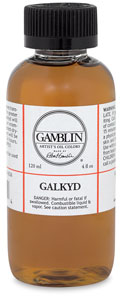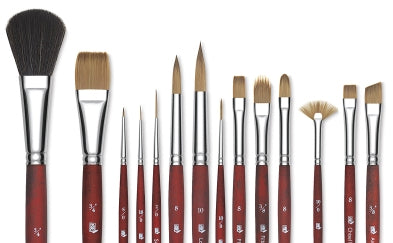Art Supplies for Painting and Drawing - What Do I Need?
Ever wonder what exactly I use to create my artwork? Well I get that question a lot and so I've put together a comprehensive list of all the things I use and depend on to create my paintings.

About my supplies
The first thing you need to know is that my work space is continuously growing and evolving just as I do as an artist. These supplies are what I currently use and trust, but this does tend to change overtime. I'll keep updating this list as I discover new supplies that I can vouch for. These links are affiliate links below.

Now, before going any further, one of the most common questions I get is about what lighting to paint under. You can have the best supplies, but if your lighting isn't adequate, then it can make it extremely difficult to create quality artwork. So here is my recommendations for lighting set ups:
Professional lighting setups I recommend for artists:
5000k 96 CRI 4FT Fluorescent lamps
Used with 48in Shop light fixture
Or
My compact setup I use on the go:
The Supplies
Updated on: 07/21/2022
Jump to category:
- Acrylic paints
- Oil Paints
- Brushes
- Mediums
- Canvas/Panels
- Sprays/Sealants
- Plein Air
- Other Equipment
- Markers
My acrylic paints:

When it comes to acrylics, I personally don't use them anymore, but that has nothing negative to do with this medium. I love acrylics and the possibilities with them. Some of my favorite artists continue to produce amazing work with them. So I've moved on to oils because of my curiosity for them and the love of the challenge, but here's what I recommend for acrylics.
For one, these are professional or "artist" grade paints. I do not recommend any lesser quality paints. Quality is a must. Second, I use both fluids and soft body paints. Fluids are great for fine lines and detail work. They are also good for glazing as the thinner consistency allows them to be washed over large areas with ease. The soft body paints are great for blocking in as they cover very well. They can also be better for blending in some circumstances.
GOLDEN FLUID ACRYLICS:

Must haves -
LIQUITEX SOFT BODY ACRYLICS:

Must haves -
Primary cyan in golden is just phthalo blue (green shade) with a bit of white
Acrylic Mediums:
What Oil Paints I Use:

When it comes to oil paints I stick to one brand to remain consistent in my work. I have been using Gamblin brand oils for a long time, however I have recently switched to Michael Harding Oil Paints.
I must say, I believe I have a better range of possibilities when using the MH Paints over Gamblin. I also enjoy the creamier feel out of the tube and coverage I get with the MH Paints.
Below is a list of what Michael Harding Paints I use now as well as the list of Gamblin paints that I used. I still recommend Gamblin, but I do prefer the Michael Harding now.
Michael Harding Oil Paint Sets and Colors
Colors I use include: Phthalo Blue Lake, Cobalt Blue, Cobalt Teal Blue Shade, Phthalo Green Yellow Shade, Bright Green Lake, Cad Yellow Lemon, Cad Yellow, Cad Yellow Deep, Indian Yellow, Cad Orange, Cad Reg, Transparent Red Oxide, Magenta, Crimson White, Titanium White 1. I also use Burnt Sienna for my sketch underpainting.
GAMBLIN ARTIST'S OILS:
Must haves -
I also really like Chromatic Black. This is a black mixed perfectly by using complimentary colors and no carbon. Works great for mixing or glazing on deep shadows.
Other favorites I use often -
Oil Mediums:

I use an alkyd-based medium which dries fairly quick in terms of oil paints. quickly. I used to use Galkyd and Liquin Original listed below, but mainly use a little bit of Liquin Impasto now and a touch of walnut oil if I need it.
-
I do not use larger than a 4oz bottle as larger bottles tend to harden up inside before it's all used up.
The other brand of this medium is by Windsor & Newton.
I clean by brushes with Gamblin's Gamsol odorless paint thinner.
Brushes:

**All brush links are correct, however some images on the actual product pages may differ. Check the product type below the image/description**
When it comes to my brushes, I'm not too picky. I find that I tent to wear out expensive brushes just as quickly as inexpensive brushes with the techniques that I use. I'm very hard on brushes. So this list is what I prefer based on low cost and great performance. You don't need all of the kinds of brushes in each category, but a couple in each is certainly helpful.
Oil vs Acrylic? Actually, I use the same brushes for both types of paint. Just make sure that the brushes are thoroughly clean and dried prior to switching from one to the other.
Blender Brushes - these are the blender brushes I use and refer to often.

Detail Brushes - These are brushes I use for fine detail like fur, eye reflections, and finishing touches.
Filbert Brushes - These brushes I use for blocking in small to medium size areas as well as moderate detail work. They create beautiful soft blends or crisp edges.

Flat/Bright Brushes - These brushes I use to cover larger areas quickly and for blending larger objects such as clouds.

Fan Brushes - I don't use fan brushes often, but when I do, I like this one

Sponges - I use these often for adding texture to rocks or similar objects.

Canvas/Panels:

When it comes to the surface I paint on, I like texture. I painted for years on gessobord/MSD panels and eventually moved away from them as I found them too smooth. I like the paint to be pulled off my brush easily and be able to work more efficiently which a bit of canvas texture can do wonders for.
Stretched Canvas - When I paint on anything typically smaller than 18x24", I prefer stretched canvas with 1.5" stretching bars.

Best Affordable choices:
These are fantastic canvases if you're on a budget! I've used and liked both often throughout the years.
W&N Classic 18x24"
---
Blick Premier 11x14"
Highest Quality:
If quality and longevity matters to you, or if you plan on painting something large, then these high-end canvases fit the bill. The best part? They won't break the bank!
Masterpiece Pro 24x36"
---
Belgian Linen 16x20"
Rolled Canvas - This canvas I use to make my canvas panels. I cut and mount the rolled canvas to a hardboard panel.

How to mount - I use a PH neutral glue and glue it to a piece of hardboard.
I will be posting a video on the steps I take to mount the canvas to board. In short, I thin the glue down with water, spread it out evenly to the board, place cut canvas on top, and smooth it out with a flat edge. To dry I place it on a flat board with another flat board on top with weight added to sandwich it until dry. To finish, I fold the edges around to the back and glue them down.
Gesso - The gesso I prefer to use when applying extra coats which I normally do to my store bought canvas.

If you want to know how I apply my gesso to my canvases then checkout my how to video here: youtu.be/_9lrRyr_zW8
Sprays/Sealants:

I spray my acrylic paintings with Krylon Crystal Clear spray prior to painting over the top with oils.
I spray my drawings with Krylon Workable Fixatif. This works also for sealing my initial drawings on canvas prior to painting over the top.
Plein Air Equipment:

My favorite plein air boxes are the Guerilla Painter boxes -
6x8" Box
8x10" Box (what I use)
9x12" Box
Tripod
The brush I'm loving for plein air painting
Mini palette cups for your mediums
Mini brush cleaner cup
Other Tools/Equipment:

The Easel I use -
Another I would recommend -
I use a palette knife for mixing paint often and various little tasks I can find.
Others:
Mixed-media Drawings:

If you've been following my work, you know that I also love to do my mixed media drawings on paper. I use Prismacolor brush markers along with the Golden Fluid Acrylics listed above to create these works of art. Here are the supplies I use for those drawings.
Paper - I create these drawings on a heavyweight mixed media paper by Strathmore.
PRISMACOLOR MARKERS:
My favorite colors list -
Nuetral gray setTrue Blue
Sky Blue Light
Cerulean Blue Light
Canary Yellow
Goldenrod
Sunburst Yellow
Poppy Red
Carmine Red
Cool Gray 10%
Cool Gray 30%
Warm Gray 10%
Warm Gray 20%
Warm Gray 30%
Light Umber 20%
Light Umber 30%
Mocha Light
Mocha Dark
Sienna Brown
Cinnamon Toast
Cream
Deco Pink
Burnt Ochre

